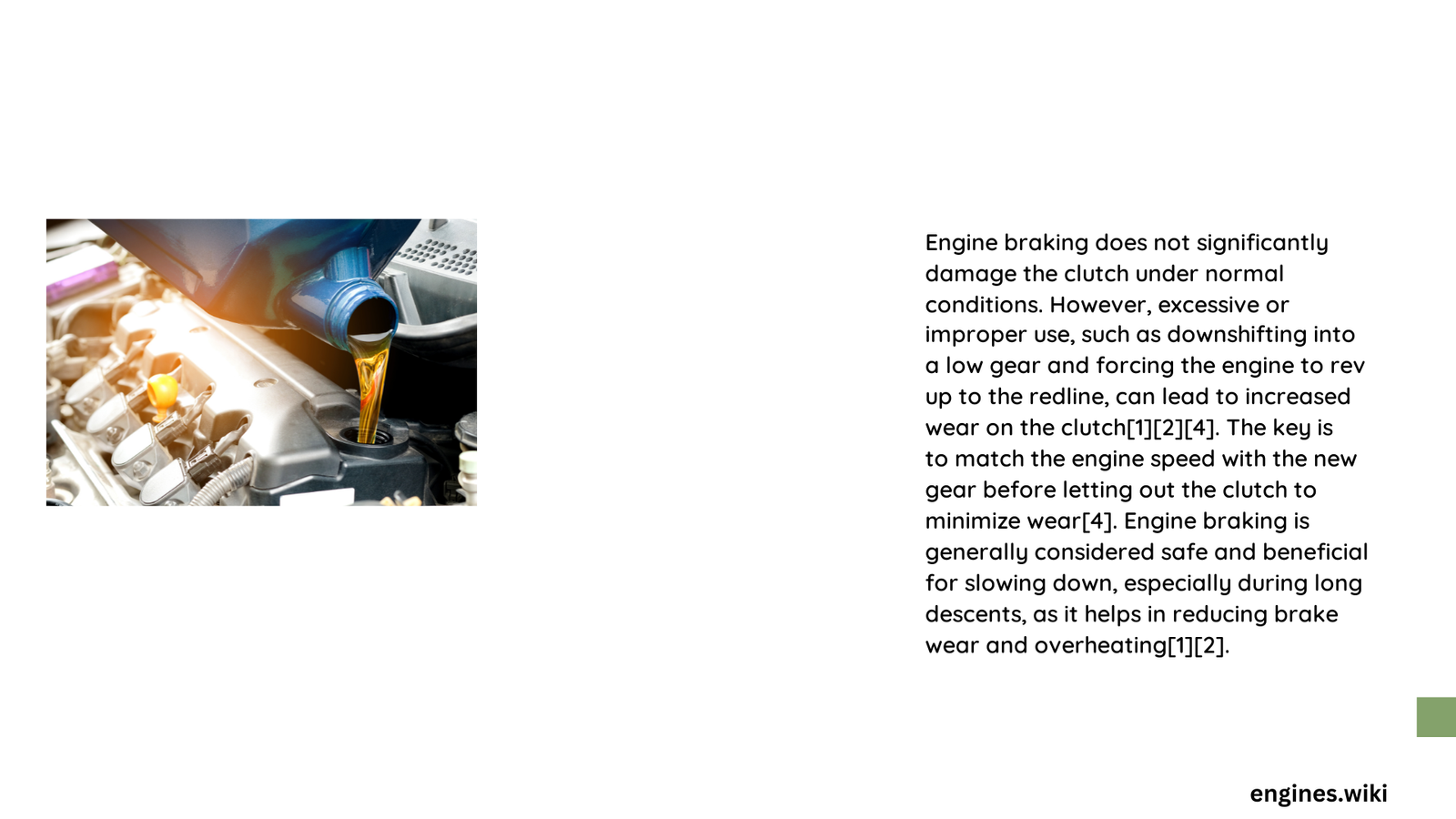Engine braking can potentially damage your clutch if not performed correctly. When drivers downshift without proper technique, the clutch experiences increased friction and wear, leading to premature component failure. Understanding the mechanical interactions and implementing precise driving strategies can significantly mitigate potential clutch damage during engine braking.
What Happens During Engine Braking?
Engine braking occurs when a driver removes the accelerator and allows the engine’s compression to slow the vehicle. This process involves complex mechanical interactions between the engine, transmission, and clutch system.
Mechanical Stress Points
| Stress Factor | Potential Impact | Mitigation Strategy |
|---|---|---|
| Clutch Slippage | High wear rate | Precise rev matching |
| Improper Downshifting | Increased friction | Smooth gear transitions |
| RPM Misalignment | Component strain | Careful gear selection |
How Does Clutch Wear Occur?

Factors Contributing to Clutch Damage
- Incorrect RPM Matching
- Causes excessive friction
- Accelerates plate degradation
-
Reduces overall clutch lifespan
-
Aggressive Downshifting
- Creates sudden mechanical stress
- Increases heat generation
- Compromises clutch material integrity
What Are Proper Engine Braking Techniques?
Recommended Practices
- Rev Match Precisely
- Synchronize engine speed with transmission
- Minimize clutch slippage
-
Reduce unnecessary friction
-
Select Appropriate Gear
- Match vehicle speed with correct gear ratio
- Avoid over-revving engine
- Maintain smooth power transmission
Can Engine Braking Be Safe?
Preventive Maintenance Strategies
Drivers can minimize clutch damage by:
– Practicing smooth downshift techniques
– Understanding vehicle-specific transmission characteristics
– Performing regular clutch system inspections
– Avoiding prolonged clutch engagement during braking
What Are Long-Term Consequences?
Potential Clutch Lifespan Implications
Improper engine braking can:
– Reduce clutch life by 30-40%
– Increase maintenance costs
– Compromise overall vehicle performance
Expert Recommendations
Professional Insights
- Use brake pedal for primary deceleration
- Implement gentle, controlled downshifts
- Learn precise rev-matching techniques
- Consider professional driving instruction
Technical Considerations
Mechanical Perspective
Engine braking’s impact varies based on:
– Vehicle transmission type
– Driving conditions
– Individual driving technique
– Maintenance history
Conclusion
Proper technique is crucial in preventing clutch damage during engine braking. By understanding mechanical interactions and implementing precise driving strategies, drivers can effectively minimize wear and extend clutch lifespan.
